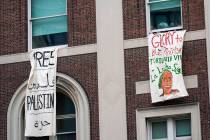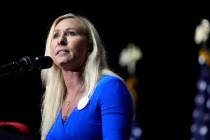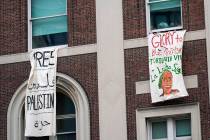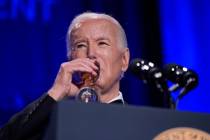Upcoming holiday a reminder to fight drunken driving wisely
With July 4th right around the corner, Americans are preparing for backyard barbecues and firework fiestas. But, while drunken driving has been on the decline for decades, America’s birthday still brings a heightened risk of drunken driving — and alcohol-related traffic accidents.
This often spurs policymakers to support poorly targeted or ineffective tactics in an attempt to keep drunken drivers off the roads — tactics such as lowering the legal limit to a 0.05 blood-alcohol concentration or increasing the use of sobriety checkpoints.
While headlines often hail these efforts as “cracking down on drunken driving,” in reality such policies target moderate and responsible social drinkers, and fail to adequately address the issue. Roughly 70 percent of alcohol-related fatalities are caused by drunken drivers with extreme blood alcohol content levels — 0.15 and above. Many of them are repeat offenders with multiple DUIs on their record. So the bulk of America’s “drunken driving epidemic” — in the words of some activists — can be traced to a specific subset of problem drinkers.
It means tackling drunken driving is impossible without targeting the worst offenders.
Yet groups such as the National Transportation Safety Board and American Medical Association are proposing anything but. Both have fought to lower the legal limit from 0.08 to 0.05 — even though fewer than 1 percent of all alcohol-related fatalities occur between 0.05 and 0.07.
“[R]educing BAC limit to 0.05 is one of many steps to end substance impairment in transportation,” the NTSB recently tweeted. The AMA has supported that measure for decades: A 1986 AMA study recommended “adoption by all states of 0.05% BAC as per se evidence of alcohol-impaired driving.” They are joined by the Centers for Disease Control and World Health Organization, among others.
But drivers at low-BAC levels aren’t problem drinkers. Research shows a driver is just as impaired talking on a hands-free cellphone as operating a vehicle at the current legal limit of 0.08. A 2013 study from Touro University in California, for example, concluded that the two cause roughly the same “driver impairment.”
If the legal limit were to drop, a 100-pound woman could have one drink in an hour and be considered legally intoxicated. Is that really necessary?
Another example of well-meaning but poorly targeted policy is the sobriety checkpoint system acclaimed by many activists and legislators. Police officers station themselves at a main thoroughfare asking all drivers to stop and show their papers. These roadblocks are intended to snare drunken drivers before they can cause serious harm — especially on holiday weekends.
Yet they yield surprisingly few drunken driving arrests. One recent checkpoint in California screened almost 1,400 drivers and resulted in no arrests. Another checkpoint in Ohio checked on more than 450 drivers without making a single arrest. Yet another stopped about 100 vehicles, only to yield three minor citations not involving alcohol.
Roving patrols present a cheaper and more effective alternative. Police officers can scan roads for signs of impaired behavior — not just drunken driving, but drowsy or speeding drivers.
That distinction matters. Roving patrols typical costs $300 and can result in numerous arrests at the hands of a single police officer. A single sobriety checkpoint, on the other hand, can cost anywhere between $8,000 and $10,000, while requiring more hands on deck — some roadblocks require dozens of police officers at a time.
There are feel-good policies — such as sobriety checkpoints and lower legal limits — and there are smart proposals to effectively combat drunk driving. On her birthday, America deserves the latter.
Sarah Longwell is the managing director of the American Beverage Institute.























